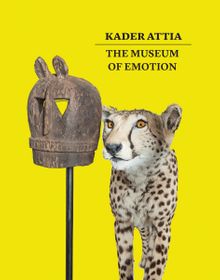ARTIST MONOGRAPHS
|
|
in stock $35.00 Free Shipping UPS GROUND IN THE CONTINENTAL U.S. |
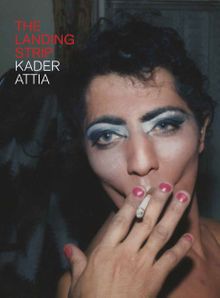 Kader Attia: The Landing Strip
Kader Attia: The Landing Strip
Published by Hayward Gallery Publishing.
Introduction by Ralph Rugoff. Text by Tarek El-Ariss.
The Landing Strip is a photographic series by French-Algerian artist Kader Attia (born 1970) that documents the lives of a group of Algerian transgender sex workers living in Paris in the late 1990s and early 2000s. Focusing on the group's shared intimacy, and taken over a period of roughly two years, Attia sought to capture and present the real lives of those in the community.
The title of the series is the name give by the women to the boulevard on which they work. This long straight road, which separates the centre of Paris from its suburbs, resembles an airport runway.
Featuring more than 140 illustrations that trace the events from day into night, and an essay by Tarek El-Ariss, Associate Professor and Chair of Middle Eastern Studies at Dartmouth University, this book is an honest and personal insight into the lives and relationships of a group on the periphery of society.
PUBLISHER
Hayward Gallery Publishing
BOOK FORMAT
Hardcover, 7.25 x 10 in. / 256 pgs / 140 color.
PUBLISHING STATUS
Pub Date 5/21/2019
Active
DISTRIBUTION
D.A.P. Exclusive
Catalog: FALL 2019
PRODUCT DETAILS
ISBN 9781853323683 TRADE
List Price: $40.00 CAD $55.00
AVAILABILITY
In stock
in stock $40.00 Free Shipping UPS GROUND IN THE CONTINENTAL U.S. |
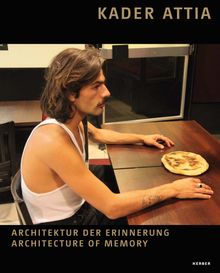 Kader Attia: Architecture of Memory
Kader Attia: Architecture of Memory
Published by Kerber.
Edited with text by Beate Reifenscheid. Text by Demosthenes Davvetas, Clémentine Deliss.
The installations and photographs of Algerian French artist Kader Attia (born 1970), based on in-depth sociological research, explore the influence of colonialism on Western and non-Western cultures. This publication presents selected works that reflect on the topic of architecture and the memories embodied within it.
PUBLISHER
Kerber
BOOK FORMAT
Paperback, 9.5 x 11.75 in. / 152 pgs / 63 color.
PUBLISHING STATUS
Pub Date 6/26/2018
Active
DISTRIBUTION
D.A.P. Exclusive
Catalog: FALL 2018 p. 192
PRODUCT DETAILS
ISBN 9783735640345 FLAT40
List Price: $50.00 CAD $67.50
AVAILABILITY
Out of stock
STATUS: Out of stock Temporarily out of stock pending additional inventory. |
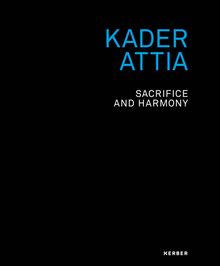 Kader Attia: Sacrifice and Harmony
Kader Attia: Sacrifice and Harmony
Published by Kerber.
Edited with text by Susanne Gaensheimer, Klaus Görner. Text by Philippe Dagen, Iwona Blazwick, Irit Rogoff.
PUBLISHER
Kerber
BOOK FORMAT
Hardcover, 9.5 x 11.5 in. / 248 pgs / 75 color / 64 bw.
PUBLISHING STATUS
Pub Date 2/28/2017
Out of print
DISTRIBUTION
D.A.P. Exclusive
Catalog: SPRING 2017 p. 158
PRODUCT DETAILS
ISBN 9783735602558 FLAT40
List Price: $55.00 CAD $72.50
AVAILABILITY
Not available
STATUS: Out of print | 00/00/00 For assistance locating a copy, please see our list of recommended out of print specialists |
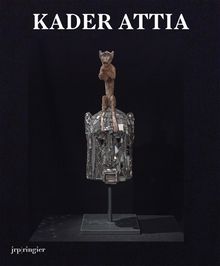 Kader Attia
Kader Attia
Published by JRP|Ringier.
Edited by Nicole Schweizer. Text by Kobena Mercer, Noémie Etienne, Monique Jeudy-Ballini, Brigitte Derlon.
PUBLISHER
JRP|Ringier
BOOK FORMAT
Paperback, 9.25 x 11.25 in. / 160 pgs / 100 color.
PUBLISHING STATUS
Pub Date 8/25/2015
Active
DISTRIBUTION
D.A.P. Exclusive
Catalog: FALL 2015 p. 172
PRODUCT DETAILS
ISBN 9783037644126 FLAT40
List Price: $55.00 CAD $72.50 GBP £30.00
AVAILABILITY
In stock
in stock $55.00 Free Shipping UPS GROUND IN THE CONTINENTAL U.S. |
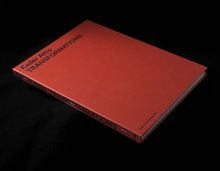 Kader Attia: Transformations
Kader Attia: Transformations
Published by Spector Books.
Edited by Ellen Blumenstein.
PUBLISHER
Spector Books
BOOK FORMAT
Hardcover, 9.25 x 12.25 in. / 224 pgs / illustrated throughout.
PUBLISHING STATUS
Pub Date 5/1/2014
Active
DISTRIBUTION
D.A.P. Exclusive
Catalog: Publisher Backlist
PRODUCT DETAILS
ISBN 9783944669236 TRADE
List Price: $40.00 CAD $54.00
AVAILABILITY
In stock
in stock $40.00 Free Shipping UPS GROUND IN THE CONTINENTAL U.S. |
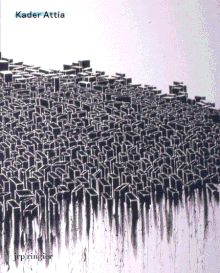 Kader Attia
Kader Attia
Published by JRP|Ringier.
Edited by Yves Aupetitallot, Thierry Prat. Text by Jean-Louis Pradel, Tami Katz-Freiman.
PUBLISHER
JRP|Ringier
BOOK FORMAT
Hardcover, 8.5 x 10.5 in. / 112 pgs / 64 color.
PUBLISHING STATUS
Pub Date 3/1/2007
Out of print
DISTRIBUTION
D.A.P. Exclusive
Catalog: SPRING 2007 p. 158
PRODUCT DETAILS
ISBN 9782940271818 TRADE
List Price: $29.00 CAD $35.00
AVAILABILITY
Not available
STATUS: Out of print | 00/00/00 For assistance locating a copy, please see our list of recommended out of print specialists |
